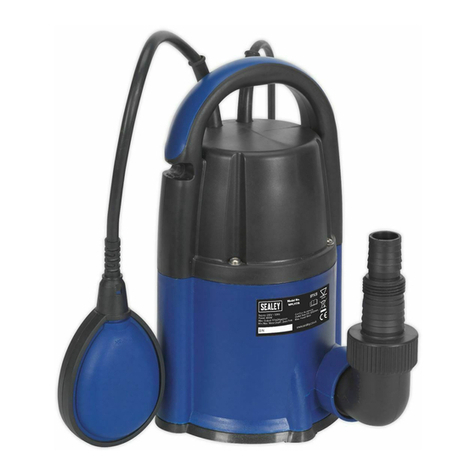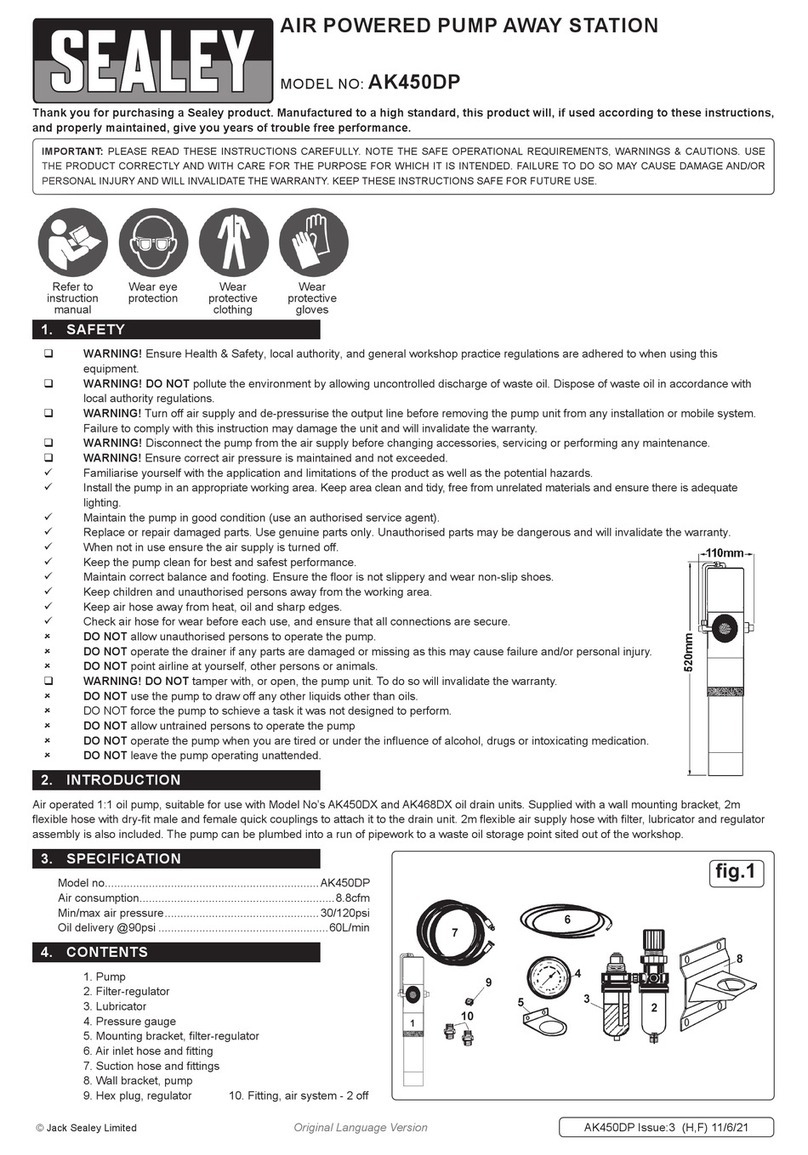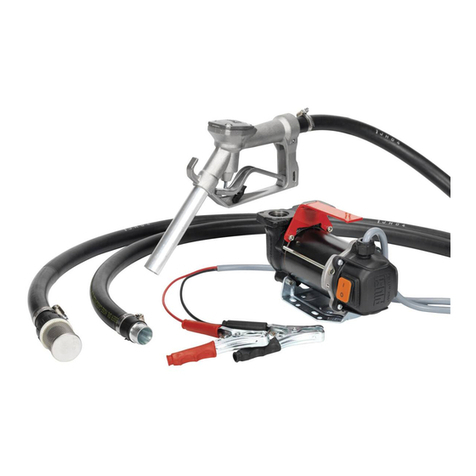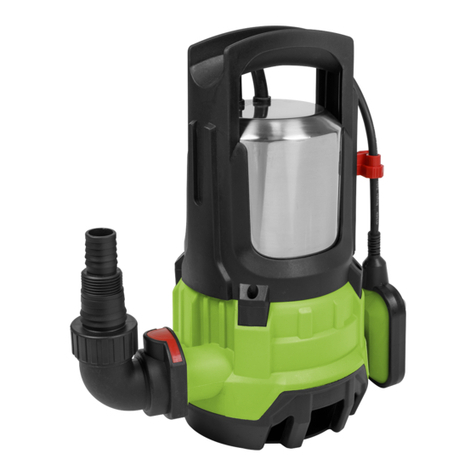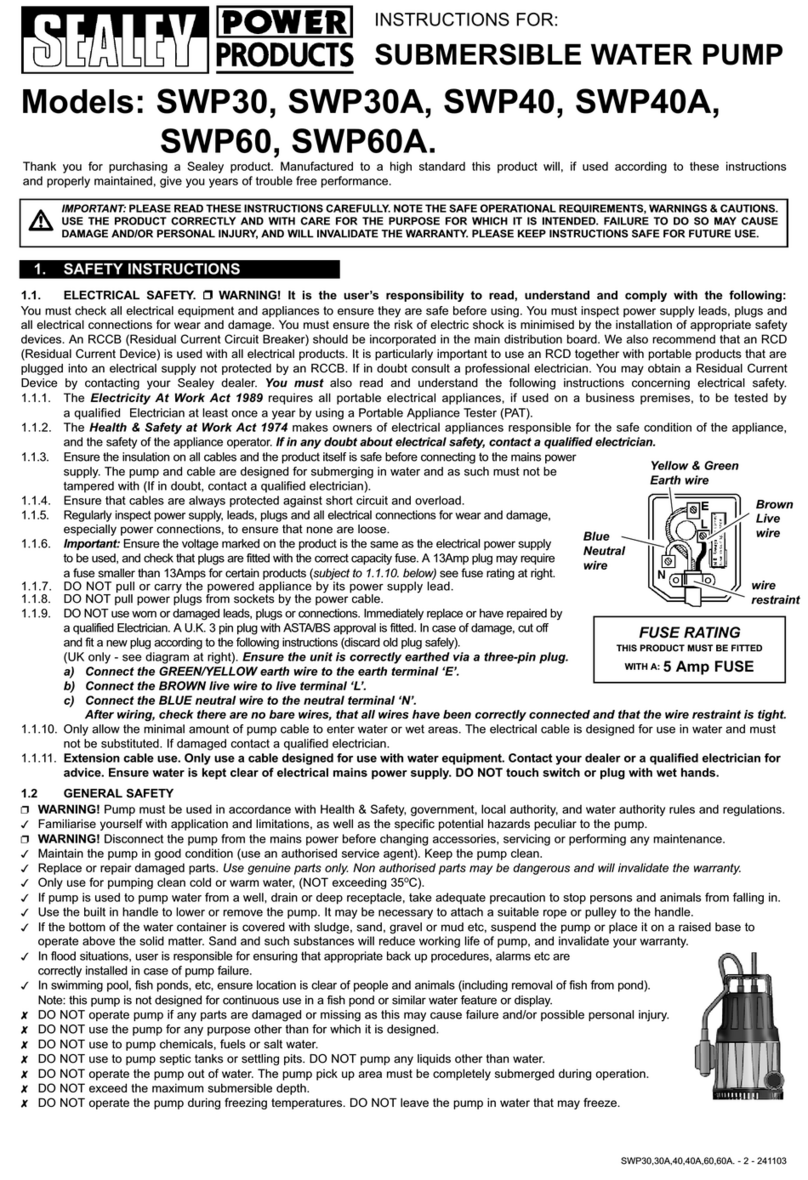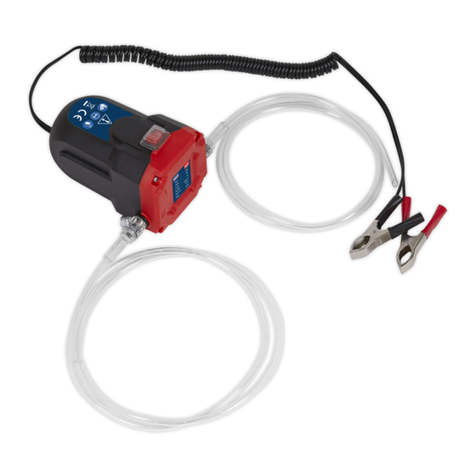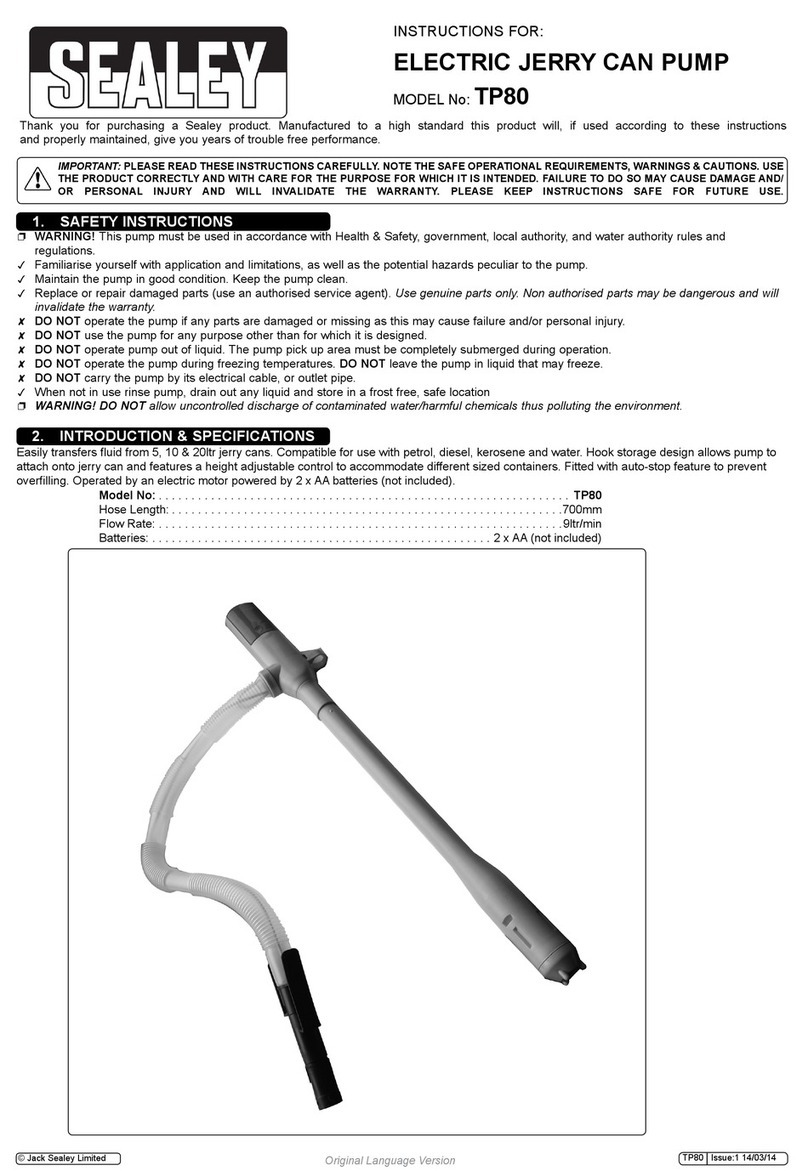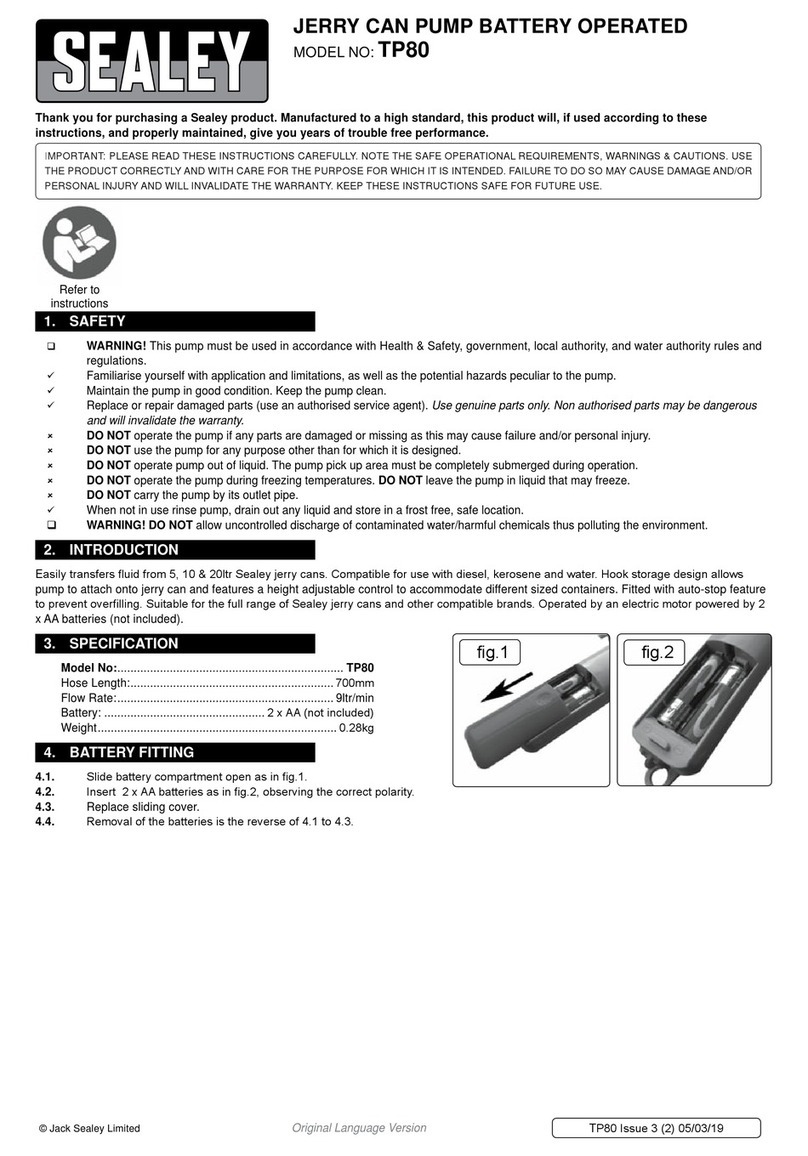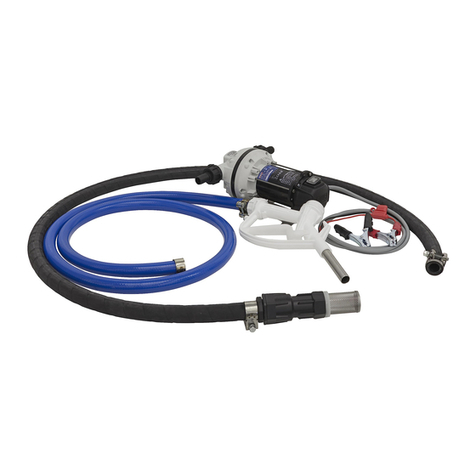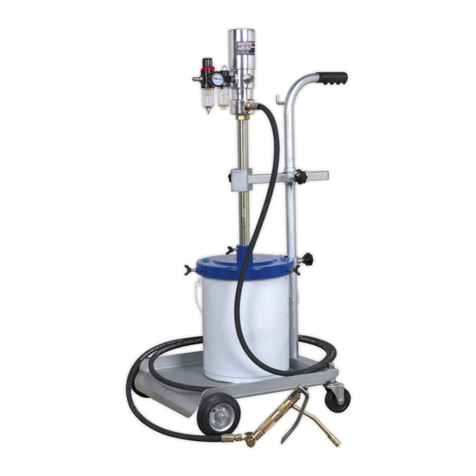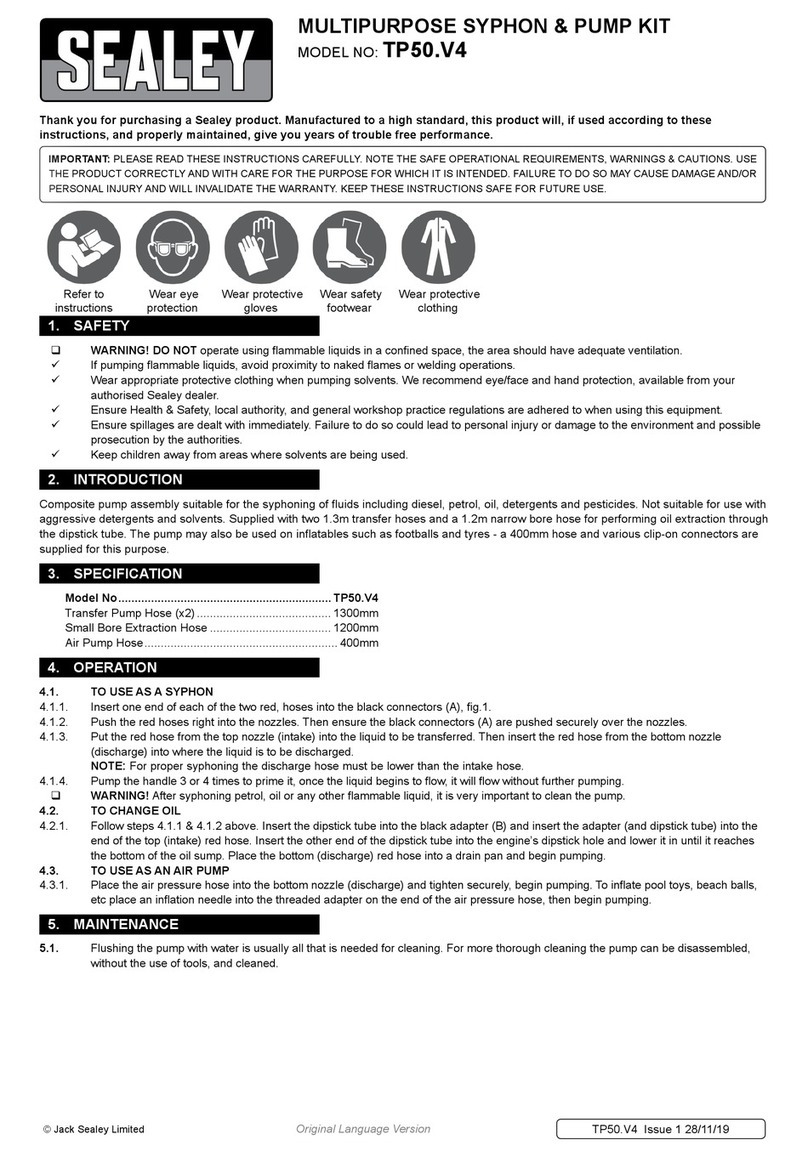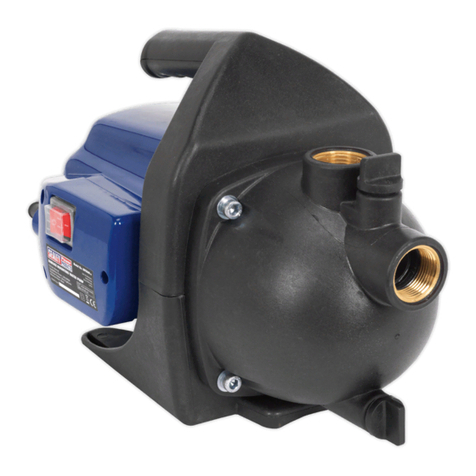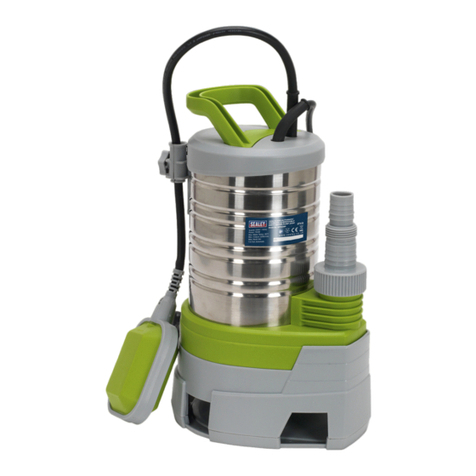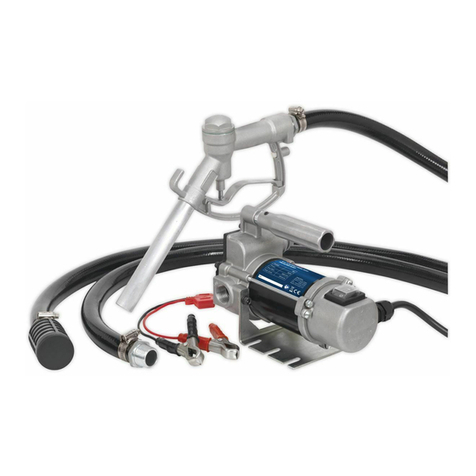
1.1. ELECTRICAL SAFETY
WARNING! It is the responsibility of the owner and the operator to read, understand and comply with the following:
You must check all electrical products, before use, to ensure that they are safe. You must inspect power cables, plugs, sockets and any other
connectors for wear or damage. You must ensure that the risk of electric shock is minimised by the installation of appropriate safety devices. A
Residual Current Circuit Breaker (RCCB) should be incorporated in the main distribution board. We also recommend that a Residual Current
Device (RCD) is used. It is particularly important to use an RCD with portable products that are plugged into a supply which is not protected
by an RCCB. If in any doubt consult a qualified electrician. You may obtain a Residual Current Device by contacting your Sealey dealer.
You must also read and understand the following instructions concerning electrical safety.
1.1.1. The Electricity at Work Act 1989 requires all portable electrical appliances, if used on business premises, to be tested by a qualified
electrician, using a Portable Appliance Tester (PAT), at least once a year.
1.1.2. The Health & Safety at Work Act 1974 makes owners of electrical appliances responsible for the safe condition of those appliances
and the safety of the appliance operators. If in any doubt about electrical safety, contact a qualified electrician.
1.1.3. Ensure that the insulation on all cables and on the appliance is safe before connecting it to the power supply. See 1.1.1. and 1.1.2.
and use a Portable Appliance Tester.
1.1.4. Ensure that cables are always protected against short circuit and overload.
1.1.5. Regularly inspect power supply cables and plugs for wear or damage and check all
connections to ensure that none is loose.
1.1.6. Important: Ensure that the voltage marked on the appliance matches the power supply
to be used and that the plug is fitted with the correct fuse - see fuse rating at right.
1.1.7. DO NOT pull or carry the appliance by the power cable.
1.1.8. DO NOT pull the plug from the socket by the cable.
1.1.9. DO NOT use worn or damaged cables, plugs or connectors. Immediately have any faulty
item repaired or replaced by a qualified electrician. When an ASTA/BS approved UK
3 pin plug is damaged, cut the cable just above the plug and dispose of the plug safely.
Fit a new plug according to the following instructions (UK only).
a) Connect the GREEN/YELLOW earth wire to the earth terminal ‘E’.
b) Connect the BROWN live wire to the live terminal ‘L’.
c) Connect the BLUE neutral wire to the neutral terminal ‘N’.
d) After wiring, check that there are no bare wires, that all wires have been correctly connected, that the cable outer
insulation extends beyond the cable restraint and that the restraint is tight.
Double insulated products, which are always marked with this symbol , are fitted with live (brown) and neutral (blue) wires only.
To rewire, connect the wires as indicated above - DO NOT connect either wire to the earth terminal.
1.1.10. Products which require more than 13 amps are supplied without a plug. In this case you must contact a qualified electrician to ensure
that a 30 amp supply is available. We recommend that you discuss the installation of an industrial round pin plug and socket with your
electrician.
1.1.11. If an extension reel is used it should be fully unwound before connection. A reel with an RCD fitted is preferred since any appliance
plugged into it will be protected. The cable core section is important and should be at least 1.5mm², but to be absolutely sure that the
capacity of the reel is suitable for this product and for others which may be used in the other output sockets, we recommend the use
of 2.5mm² section cable.
INSTRUCTIONS FOR:
DIESEL/FLUID TRANSFER PUMP
MODEL No: TP955.V2
Thank you for purchasing a Sealey product. Manufactured to a high standard this product will, if used according to these instructions
and properly maintained, give you years of trouble free performance.
1. SAFETY INSTRUCTIONS
IMPORTANT: PLEASE READ THESE INSTRUCTIONS CAREFULLY. NOTE THE SAFE OPERATIONAL REQUIREMENTS, WARNINGS & CAUTIONS.
USE THE PRODUCT CORRECTLY AND WITH CARE FOR THE PURPOSE FOR WHICH IT IS INTENDED. FAILURE TO DO SO MAY CAUSE
DAMAGE AND/OR PERSONAL INJURY, AND WILL INVALIDATE THE WARRANTY. PLEASE KEEP INSTRUCTIONS SAFE FOR FUTURE USE.
1.2. GENERAL SAFETY
WARNING! Ensure Health & Safety, government and local authority regulations relating to the transfer of diesel are adhered to when using
this equipment. Familiarise yourself with the application, limitations and specific hazards peculiar to the pump.
WARNING! Disconnect pump from the mains power before changing accessories, servicing or performing any maintenance.
DANGER: DO NOT use pump for the transfer of fluid other than diesel fuel of a viscosity from 2 to 5.35 cSt at 37.8°C, with a minimum
flash point (PM) of >55°C, or for any other purpose.
DANGER: Motor is not explosion proof and must not be used where flammable vapours may be present.
Maintain pump in good condition (use authorised service agent). Drain meter and pipes before dismantling.
Ensure unit is correctly calibrated before use, and after having been dismantling for maintenance.
Maintain correct balance and footing. Ensure the floor is not slippery and wear non-slip shoes.
Ensure the transfer area is free of clutter and has adequate lighting.
The motor is equipped with a thermal cut-out which will shut the motor off should the unit over heat.
If this happens, turn the unit off and allow to cool, by which time the cut-out will automatically reset.
Keep children and unauthorised persons away from the working area.
Replace/repair damaged parts. Use genuine parts. Unauthorised parts are
dangerous and will invalidate warranty.
DO NOT use the pump without the delivery nozzle attached.
DO NOT start or stop the pump by switching on or off at the mains power supply.
DO NOT operate the unit with wet hands. We recommend the use of diesel
resistant gloves and goggles.
DO NOT use with a motor other than that built into the unit (incorrect flow
pressure will distort pump accuracy).
IMPORTANT: It is installer’s responsibility to ensure all supply pipes, fixtures and
fittings are adequate for the safe flow of diesel fuel.
FUSE RATING 13 AMP
Blue
Neutral
Wire
Yellow & Green
Earth Wire
Cable
Restraint
Brown
Live
Wire
Original Language Version TP955.V2 Issue: 2 - 23/08/10
